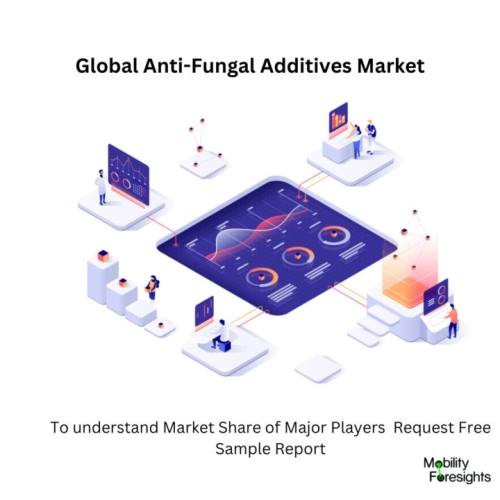
- Get in Touch with Us

Last Updated: Apr 25, 2025 | Study Period: 2024-2030
A pharmaceutical fungicide or fungistatic called an antifungal additive, commonly referred to as an antimycotic drug, is used to treat and prevent mycosis, including athlete's foot, ringworm, candidiasis (thrush), and dangerous systemic infections such cryptococcal meningitis.
Most of these medications must be bought with a doctor's prescription, but some are sold without one (OTC).
Antifungals come in two varieties: local and systemic. Depending on the illness being treated, topical or vaginal administration of local antifungals is typical.
Oral or intravenous administration is used for systemic antifungals. Detergents and disinfectants are helpful, but they cannot guarantee ongoing security.
Additionally, they could include harsh chemicals like bleach and peroxide, both of which carry a host of dangers. Fortunately, a better approach exists.

The Global Anti-fungal additives market accounted for $XX Billion in 2023 and is anticipated to reach $XX Billion by 2030, registering a CAGR of XX% from 2024 to 2030.
Tech mer PM introduces an antifungal additive. The additive complies with US Food and Drug Administration regulations for food contact, and its active ingredient is on the EPA's list of compounds of "minimum concern" that are excluded from registration under the Federal Insecticide, Fungicide, and Rodenticide Act.
Fungal RNA production, cell wall, and membrane components are the most typical antifungal additives, however additional antifungal targets are being researched.
However, fungi have evolved resistance strategies, such as the overexpression of efflux pump proteins and the creation of biofilms, highlighting the significance of comprehending these strategies.
The creation of novel antifungal formulations is a crucial challenge, and there is growing interest in nanoparticles as novel antifungal medication carriers.
Traditional antifungals' efficacy and pharmacokinetic characteristics have also been improved by changes made to their chemical structures.
| Sl no | Topic |
| 1 | Market Segmentation |
| 2 | Scope of the report |
| 3 | Abbreviations |
| 4 | Research Methodology |
| 5 | Executive Summary |
| 6 | Introduction |
| 7 | Insights from Industry stakeholders |
| 8 | Cost breakdown of Product by sub-components and average profit margin |
| 9 | Disruptive innovation in the Industry |
| 10 | Technology trends in the Industry |
| 11 | Consumer trends in the industry |
| 12 | Recent Production Milestones |
| 13 | Component Manufacturing in US, EU and China |
| 14 | COVID-19 impact on overall market |
| 15 | COVID-19 impact on Production of components |
| 16 | COVID-19 impact on Point of sale |
| 17 | Market Segmentation, Dynamics and Forecast by Geography, 2024-2030 |
| 18 | Market Segmentation, Dynamics and Forecast by Product Type, 2024-2030 |
| 19 | Market Segmentation, Dynamics and Forecast by Application, 2024-2030 |
| 20 | Market Segmentation, Dynamics and Forecast by End use, 2024-2030 |
| 21 | Product installation rate by OEM, 2023 |
| 22 | Incline/Decline in Average B-2-B selling price in past 5 years |
| 23 | Competition from substitute products |
| 24 | Gross margin and average profitability of suppliers |
| 25 | New product development in past 12 months |
| 26 | M&A in past 12 months |
| 27 | Growth strategy of leading players |
| 28 | Market share of vendors, 2023 |
| 29 | Company Profiles |
| 30 | Unmet needs and opportunity for new suppliers |
| 31 | Conclusion |
| 32 | Appendix |